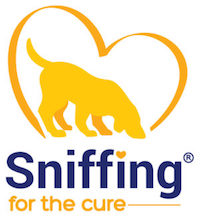Have you ever looked at a picture of a puppy or your dog and felt that you are instantly feeling calm, happy, maybe you find yourself smiling? At times, I get caught up in the stress of multiple deadlines and the tension that comes from numerous responsibilities. Guess how I center and refocus my mind? I keep photos of my dogs in my office. Looking at their pictures makes me remember the simple things that bring joy to my life. So, how is it that just looking or interacting with our pets makes us feel better?
🐾 We have a natural predisposition to be attracted to certain facial features present in our companion pets. Research has shown that we (humans) tend to be drawn to a set of facial characteristics that are associated with infancy and youth. When we see an animal with facial features such as large head, round face, large eyes and a small nose and mouth, it triggers an innate releasing mechanism for caregiving and affective orientation toward that animal. Several studies have confirmed that faces with infantile traits are perceived as “cute” and are consistently preferred over those with less soft facial features. The presence of these infantile facial features is often present in companion animals and may contribute to our attraction to these animals and also be the reason for our motivational drive to pet-keeping and pet-caretaking.
🐾 Interacting with our pets triggers a chemical change in our bodies. Several studies have found that levels of a hormone called oxytocin increases after we interact with our pets. Oxytocin is a powerful hormone that is involved in social bonding and maternal attachment. In 2015, scientists demonstrated that sustained eye contact between a dog owner and his dog resulted in higher levels of oxytocin in both the dog and the owner. Also, sniffing oxytocin increased gazing in dogs, an effect that transferred to their owners. The release of this hormone results in physical and chemical changes that slow the heart rate and block the production of stress hormones, creating a sense of calm, comfort and focus. The chemical changes are not limited to oxytocin. Other studies have revealed that after a positive interaction between dog lovers and dogs, both the owners and dogs experienced higher levels of not only oxytocin but also beta-endorphin, prolactin, and dopamine. Both endorphin and dopamine are fundamental to our sense of well-being.

🐾 An image of our pet can profoundly affect the activity and biochemistry of our brains. In addition to the hormonal changes, behavioral studies looking at brain activity demonstrate that specific parts of the brain are activated when people look at their pets.
A group of researchers examined the brain activity as mothers viewed images of their child and dog. The study identified similarities in the perceived emotional experience and brain function associated with the mother-child and mother-dog bond. The participants reported similar pleasantness and excitement ratings for their child and dog. Thus, the results show that not only the direct interaction, but the thought or image of your dog can activate a hormonal response and brain activity that is related to affiliation, reward, and emotion.
These scientific studies provide evidence of the biological changes that facilitate the maintenance of our social bond with our pets. Now I understand why I am attracted to my dogs’ big round eyes and big heads.
If you have a funny picture of your pet, please share it with us. We would love to post your photo and share the fuzzy, happy feeling we get when we see our beloved pets.






No Comments